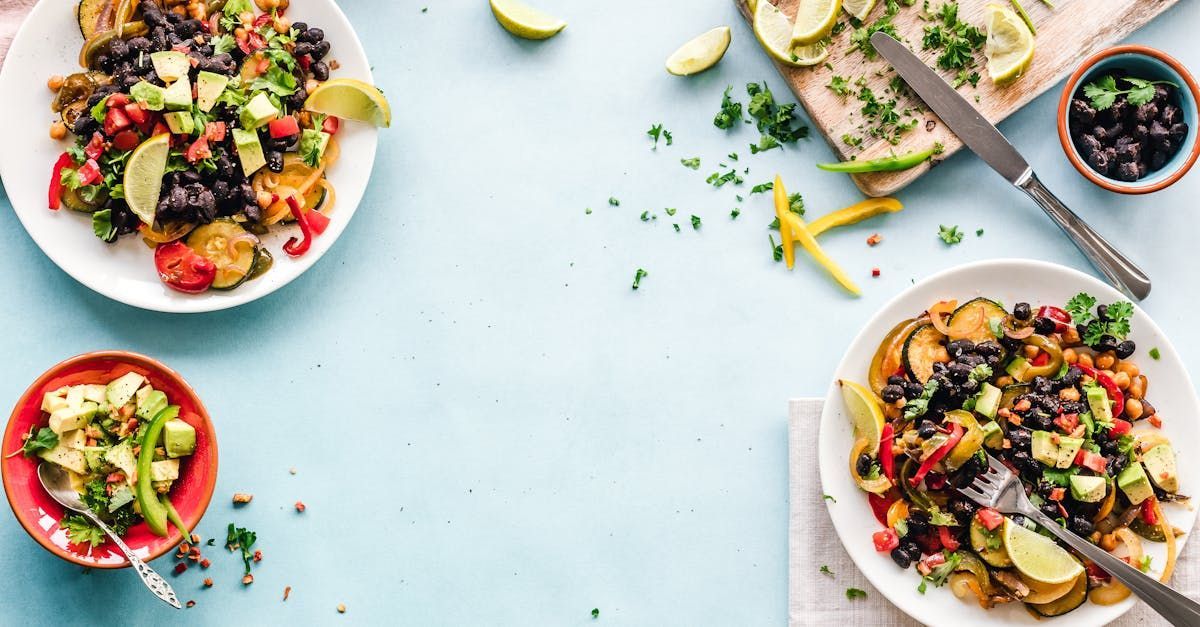What You Need to Know About Paleo
Have you ever wondered what our ancestors truly ate before the advent of modern agriculture? This fascinating question lies at the heart of the Paleolithic diet, commonly known as paleo—an approach to eating that's helping countless people reconnect with whole, nourishing foods.
The paleo diet invites you to explore foods similar to those consumed during the Paleolithic era, roughly 2.5 million to 10,000 years ago. Think of it as embracing the dietary patterns of our hunter-gatherer ancestors—a time when food was simpler, less processed, and came directly from nature.
When you choose paleo, you're choosing whole foods that fuel your body naturally. This means enjoying quality meats, fresh fish, eggs, vibrant vegetables, seasonal fruits, nuts, seeds, wholesome fats, and aromatic spices. You'll be stepping away from highly processed foods, refined sugars, dairy products, legumes, grains, artificial additives, and trans fats.
But what makes this ancestral approach so compelling for modern health seekers? And what should you consider before embarking on this journey? Let's explore everything you need to know to make an informed decision about whether paleo aligns with your wellness goals.
Understanding the Paleo Philosophy
Why would anyone want to return to Paleolithic eating patterns? Our modern diet has evolved dramatically through farming practices, allowing us to cultivate and consume abundant grains, legumes, and sugars. Yet when we consider human history as a whole, these foods are remarkably recent additions to our plates.
The philosophy behind paleo suggests that our bodies haven't fully adapted to process these agricultural foods optimally. This concept, known as the discordance hypothesis, proposes that this mismatch between our genetics and our modern diet may contribute to various health challenges. Paleo advocates believe that returning to ancestral eating patterns can help our bodies function more harmoniously.
The Science Behind Paleo
The paleo concept certainly sparks curiosity—but what does the research tell us?
Interestingly, some experts have challenged the core assumptions of the discordance hypothesis. Archaeological research reveals that certain Paleolithic humans consumed wild grains as far back as 30,000 years ago. These weren't cultivated grains, but wild varieties that hunter-gatherers could access naturally.
It's also important to recognize that our Paleolithic ancestors didn't follow one universal diet. Their food choices varied dramatically based on geography, climate, and seasonal availability. This diversity reminds us that there's flexibility in how we can interpret and apply paleo principles today.
Like any dietary approach, paleo continues to generate discussion and research among nutrition experts, offering both promising benefits and important considerations.
Your Paleo Food Guide
The beauty of paleo lies in its flexibility. While some people follow strict guidelines, others use them as a foundation for personalized choices. Here's what typically guides paleo eating:
Foods to mindfully avoid include:
- Grains such as wheat, barley, spelt, and rye
- Legumes including beans and lentils
- Dairy products (though some paleo variations include select options)
- Refined sugar, high-fructose corn syrup, and artificial sweeteners
- Certain vegetable oils like sunflower oil
- Trans fats (labeled as "hydrogenated" or "partially hydrogenated" oils)
- Highly processed foods
Your plate will be filled with nourishing whole foods:
- Quality meats including pork, poultry, beef, and lamb
- Fresh fish and seafood
- Pasture-raised eggs
- Colorful vegetables and fruits
- Nuts and seeds
- Healthy fats and oils
- Herbs, sea salt, and spices
Many paleo enthusiasts choose organic, grass-fed, and free-range options when possible, aligning more closely with ancestral food quality.
Some people expand their paleo approach to include:
- Red wine in moderation
- Dark chocolate (70% cacao or higher)
- Natural sweeteners like honey
- Grass-fed butter and certain cheeses
- Small amounts of gluten-free grains
Coffee and tea remain welcome companions on your paleo journey.
Many find success using paleo as an elimination protocol—following it strictly for one to two months, then thoughtfully reintroducing foods while observing how their body responds. This personalized approach helps identify which foods truly serve your individual wellness.
The Potential Benefits of Paleo Living
What might you experience when embracing paleo? Research offers some encouraging insights.
Many people discover paleo while seeking sustainable weight management. A comprehensive review of studies found that paleo eating may support healthy weight loss and waist circumference reduction. However, sustainability remains key—finding an approach you can maintain long-term matters more than short-term results.
Another promising area involves cardiovascular health. Some research suggests paleo might help support healthy blood pressure , though more studies will help clarify these benefits.
Many people report experiencing improved digestion, better energy balance, and enhanced mood when following paleo principles. While individual experiences vary, these personal testimonials add to the growing interest in ancestral eating patterns.
Important Considerations
When approached thoughtfully, paleo eating presents minimal risks for most people. However, awareness of potential nutritional gaps helps ensure success.
Standard paleo eating may provide less calcium and vitamin D than conventional diets. The higher saturated fat and protein content also deserves consideration, particularly for those with existing kidney or heart concerns.
Fiber intake requires attention too—consciously including plenty of fiber-rich vegetables and fruits helps maintain digestive wellness.
We always recommend consulting with your healthcare provider before making significant dietary changes. This becomes especially important if you have existing health conditions or concerns.
If you have a history with disordered eating, please work closely with both your doctor and therapist before exploring any new eating approach. Your wellbeing always comes first.
A Week of Paleo Inspiration
Wondering what paleo looks like in practice? Here's a sample week to spark your creativity:
Monday
Breakfast: Free-range eggs with bacon, sautéed spinach and heirloom tomatoes
Lunch: Wild-caught tuna salad with crisp lettuce, bell peppers, and olive oil
Dinner: Grass-fed beef stir-fry with seasonal vegetables
Tuesday
Breakfast: Vegetable-packed omelet with fresh herbs
Lunch: Pan-seared salmon with garlicky greens
Dinner: Comforting chicken and vegetable soup
Wednesday
Breakfast: Roasted sweet potato topped with poached egg and sautéed vegetables
Lunch: Chicken salad with toasted pecans and fresh greens
Dinner: Bunless burgers with crisp garden salad
Thursday
Breakfast: Mixed berries and apple slices with almond butter
Lunch: Chicken and avocado lettuce wraps
Dinner: Herb-crusted pork with colorful salad
Friday
Breakfast: Banana chia seed pudding with cinnamon
Lunch: Strawberry spinach salad with crispy bacon
Dinner: Roasted chicken with root vegetables
Satisfying Paleo Snacks
Between meals, enjoy these nourishing options:
- Crispy plantain chips
- Trail mix with berries and nuts
- Seed crackers with prosciutto and guacamole
- Fresh veggie sticks with avocado dip
- Dark chocolate squares
- Hard-boiled eggs
- Apple slices with almond butter
- Creamy chia pudding
- Green smoothies
- Warming soups
- Colorful salads
Beginning Your Paleo Journey
Ready to explore paleo for yourself? Here's how to start with confidence:
Partner with Your Healthcare Team
Before making any significant dietary shift, connect with your doctor. They'll help determine if paleo aligns with your health needs and can offer personalized guidance for your journey.
Find Your Community
Embarking on dietary changes feels more manageable with support. Whether family members join you or you connect with online communities, having companions makes the journey more enjoyable and sustainable.
Consider exploring paleo-focused forums, social media groups, and blogs where you can share experiences and find encouragement. Knew Health Members get access to certified health coaches as part of their Membership. They're wonderful resources for dietary education, goal setting, and accountability as you work to improve your wellness.
Discover Delicious Paleo Recipes
While many paleo meals are beautifully simple—combining quality proteins with vegetables and healthy fats—variety keeps things interesting. Explore the wealth of paleo cookbooks, blogs, and recipe collections available. Create a collection of appealing recipes and make a shopping list of ingredients you'll need.
Refresh Your Pantry
If non-paleo foods like pasta, candy, or processed snacks feel too tempting, consider donating them to a local food bank. This creates space—both physically and mentally—for your new approach.
Stock Up on Whole Foods
Fill your kitchen with paleo-friendly options, including plenty of convenient snacks. Reading ingredient labels becomes second nature as you learn to identify hidden sugars and additives.
Consider Strategic Supplementation
Since paleo may provide less calcium, vitamin D, and dietary fiber than conventional diets, thoughtful supplementation can help bridge any gaps. Knew Health Members enjoy generous discounts on quality supplements , one of many valuable services we offer our Community.
The Paleolithic diet celebrates whole, unprocessed foods and ancestral wisdom. While research continues to evolve, existing studies suggest potential benefits for weight management and overall wellness. If you're curious about exploring paleo, begin by having an open conversation with your healthcare provider about whether this approach aligns with your individual health journey.
RESOURCES
de Menezes, E. V. A, et al. (2019). Influence of Paleolithic diet on anthropometric markers in chronic diseases: systematic review and meta-analysis. https://www.ncbi.nlm.nih.gov/pmc/articles/PMC6647066/
Jönsson, T. et al. (2009). Beneficial effects of a Paleolithic diet on cardiovascular risk factors in type 2 diabetes: a randomized cross-over pilot study. https://pubmed.ncbi.nlm.nih.gov/19604407/
Osterdahl, M. et al. (2008). Effects of a short-term intervention with a paleolithic diet in healthy volunteers. https://pubmed.ncbi.nlm.nih.gov/17522610/
Wang, C. et al. (2016). Macro-Process of Past Plant Subsistence from the Upper Paleolithic to Middle Neolithic in China: A Quantitative Analysis of Multi-Archaeobotanical Data. https://journals.plos.org/plosone/article?id=10.1371/journal.pone.0148136
Disclaimer: This information is being provided to you for educational and informational purposes only. It is being provided to educate you about how to take care of your body and as a self-help tool for your own use so that you can reach your own health goals. It is not intended to treat or cure any specific illness and is not to replace the guidance provided by your own medical practitioner. This information is to be used at your own risk based on your own judgment. If you suspect you have a medical problem, we urge you to take appropriate action by seeking medical attention.










